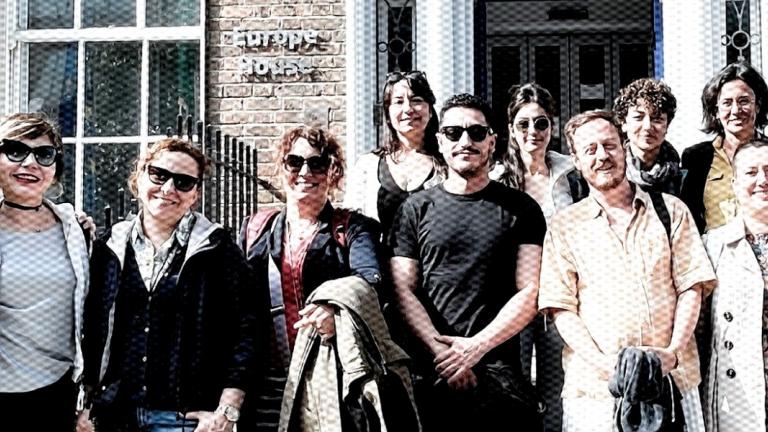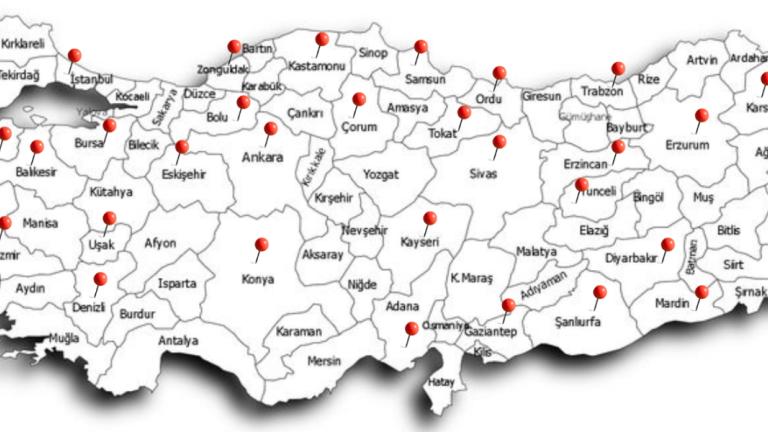
Humanitarian aid should be localized
Research predicts that "forced migration" will be on the agenda of all of us, perhaps a part of our daily lives, in the near future, due to increasingly frequent climatic anomalies, wars, and conflicts. While theories claiming that each of us will one day become a 'refugee' or 'immigrant'** for one reason or another, the data, unfortunately, do not show the opposite.
Truths
Let's take a look at the harsh reality:
- In 2020, 88 million people had to leave their homes due to natural and man-made disasters. Moreover, such a number has never been seen before.
- Again in 2020, 170 million people were affected by armed conflicts.
- According to the United Nations, 235 million people will need help and protection in 2021 alone.
- In the same year, that is, in 2021, a resource of 35 billion dollars is foreseen to reach the needy all over the world.
- Although the resources allocated to humanitarian aid increase every year, together with those who need humanitarian aid, not all needs can be met.
Effective and effecient humanitarian and post-disaster response
'Humanitarian aid', in the current sense, has over 150 years old. We no longer just 'help'; we are not in a spiritually based philanthropy business; We adopt a rights-based and principled approach for a fair world where resources are equally distributed. We agree on our global principles. Now, as NGOs, we know our reasons for existence, draw the boundaries of which end of intervention and recovery we will take, choose our role and mobilize the volunteers and resources that support us. In addition, as NGOs working together especially in the field of disaster, we have a strong civil organization on how to work together since the 1999 earthquake, moreover, we are experienced. After countless projects and operations, we can predict what results we can achieve when we do what and how. In addition, we are stronger in terms of coordination during and after the disaster, communication with each other, and public institutions. We have good examples such as NEAR Network in the world and Disaster Platform in Turkey.
Our resources
But as we see in the 'hard realities', natural and man-made disasters affect so many people (and the other creatures we share the world with) that solidarity with volunteer labor and donations is insufficient to cure problems. We need a resource beyond volunteering and donations and to run our business professionally. For this reason, the United Nations, which was established in 1945 to protect world peace and security and to establish an international economic, social and cultural cooperation, continues to exist as one of the important determinants of today's humanitarian aid system. And now, the humanitarian aid mechanism, flowing from states in the form of humanitarian and development funds and advancing under the leadership of the United Nations, needs our collective mind to discover the most effective solutions with the least resources.
Our problem
The "World Humanitarian Summit", the first of which was held in Istanbul in May 2016, was a step in this pursuit. The shortcomings of the humanitarian aid system, its future, and possible solutions were discussed at the Summit hosted by the United Nations. In this large meeting attended by senior politicians from nearly 60 United Nations member countries, representatives from nearly 700 non-governmental organizations, and experts from the private sector, academia, public institutions, and the media, the main flaw of the humanitarian aid system was described in detail: the current system is too centralized, top-down and United Nations focused; so it wasn't agile and efficient enough. The data were again confirming. Back then, just as today, two-thirds of state-funded humanitarian aid came from only 5 countries; moreover, in that year, 2016, only 1.7 percent of the total humanitarian aid funds were directly transferred to local and national NGOs, the share transferred to crisis-affected states slightly exceeded 3 percent of the total funds.
'Grand Bargain' in humanitarian aid
The strongest message that came to the fore at this meeting with 9000 participants was the need for humanitarian aid to approach the local. In this meeting, it was agreed to transfer more capacity and resources to local actors for disaster preparedness, risk reduction, and humanitarian aid work. The event's achievement was the 'Grand Bargain' agreement, which is translated into Turkish as the 'Büyük Uzlaşma'. In its 51 articles of 10 headings, the consensus proclaimed the principles of delivering humanitarian aid with more flexible, more local, more people-oriented, and less bureaucratic point-blank moves.
With this compromise, which we can call a 'reform',
- greater transparency in the humanitarian chain,
- transferring global funds to local actors,
- investment in the leadership and capacities of local stakeholders,
- stretching donor rules on access to grants,
- reducing the reporting burden,
- long-term (multi-year) granting of funds,
- increase in cash assistance programs and
- commitments were made on the integration of humanitarian aid and development and peace-supporting funds.
To date, this commitment has been signed by 63 institutions, including donors, UN agencies, and international NGOs. Of course, it was not a coincidence that the Summit was held in Istanbul. Carrying the weight of the refugee crisis on its shoulders, Turkey is one of the actors that need to keep pace with and even guide this reform in humanitarian aid.
On-site solution, local solution
This is exactly why the Localization Advocacy Group in Turkey was born to respond to the reform needs of the humanitarian aid system. There are 24 local and national NGOs in the group that progresses with the initiative of the Support to Life Association, the Human Resource Development Foundation (İKGV), and the Civil Society Development Center (STGM). The Localization Advocacy Group, which meets every two weeks, sets targets, and develops strategies for the localization of humanitarian aid in Turkey.
As the Localization Advocacy Group, we
- strengthen the organization at the local level,
- supporting the development of refugee associations and making their voices heard,
- To increase the quality cooperation of international humanitarian aid actors with local NGOs,
- to support more humanitarian funds to reach local governments and NGOs,
- encouraging the cooperation of public institutions with local NGOs,
- invite local governments to further humanitarian work,
- and donors to give more initiative to local governments and NGOs in the management of funds.
- The principle that will save humanitarian aid from being centralized and dispersed by a centrifugal force that will distract from its goals seems to be 'localization' today. We can learn about a problem best from those who experience it; So how can we argue that the most viable, most effective, fastest, and most economical solution will not come from the same person who needs healing the most? All we know is in our pocket; now, we should at least give it an ear, be a voice and support it.
**MINI DICTIONARY
The term forced migration is used as a general, unframed term covering many forms of displacement or involuntary displacement across international borders or within their country. For example, people displaced by environmental disasters, conflict, famine or large-scale development projects may be forced to migrate.
The concept of refugee is defined and protected by international law. Refugees; Persecution, conflict, attack or other situations that seriously disturb the peace of the community, are people who are outside the country of origin and as a result seek international protection.
The word immigrant, on the other hand, can also include those who migrate for economic reasons or not, unlike refugees; At the international level, there is no single legal definition. Some policy makers, international institutions and media organizations perceive and use the word as a collective term that includes both immigrants and refugees. For this reason, both are used in the text.
Retrieved from UNHCR (March 2016), https://www.unhcr.org/cy/wp-content/uploads/sites/41/2018/02/UNHCR_Refugee_or_Migrant_TR.pdf.

STGM Studio
We have good news for CSOs that want to produce video content. In our studio in our office, you can shoot your videos and get editing support.






